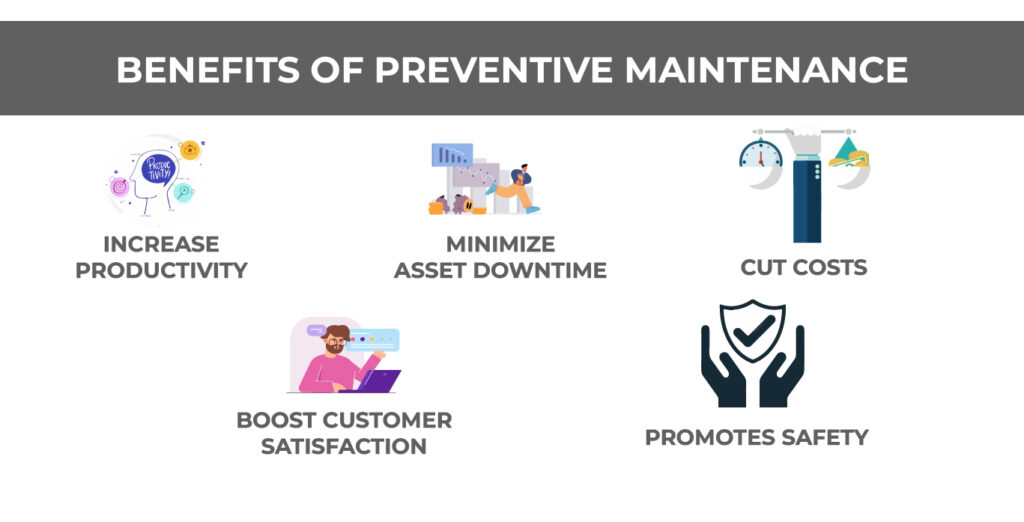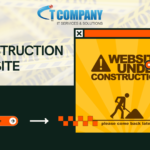
Table of Contents
ToggleA preventive maintenance plan is a systematic technique to maintaining the condition of a structure, machine, or other piece of equipment. A preventative Maintenance of a Website approach necessitates frequent inspection and upkeep to address possible concerns before they escalate into more urgent repair or replacement demands.
Preventive maintenance is the antithesis of reactive maintenance, which addresses equipment defects as they occur. Sometimes referred to as proactive maintenance, it necessitates a thorough maintenance strategy to prevent failures and identify vital equipment.
Preventive maintenance is crucial for extending the life of assets and increasing their efficiency while lowering the expenses associated with urgent repairs.
Advantages of preventative maintenance
Preventive maintenance is crucial for lowering future expenses and decreasing unplanned downtime. Adopting preventative maintenance concepts ensures good asset performance, decreases repair backlogs, and increases safety.

CMMS aids in the definition of preventative maintenance activities, facilitates the development of work orders, and records both maintenance costs and labor time associated with PM programs. Finally, using a CMMS will help a business improve equipment dependability and eliminate operational disruptions caused by unplanned faults.
Increase productivity
Preventive maintenance (PM) not only keeps your machinery running at peak performance, but it also boosts productivity. Regular preventive maintenance decreases the need for reactive or emergency repairs, enabling maintenance personnel to focus on everyday tasks rather than unanticipated downtime.
Brightly’s study has shown that a well-executed project management program may reduce emergency work by up to 50–65%. However, maintenance personnel must have the necessary tools and resources to carry out successful PM plans; this is most successfully accomplished through precise machine data, careful planning, and the usage of trustworthy components from respected suppliers.
Cut expenses
Implementing preventative maintenance plans can result in significant cost reductions for enterprises. These costs include labor and repair expenditures, utility bills, and the cost of not having extra parts on hand when repairs are required.
Instead of waiting for an unanticipated failure, preventative maintenance necessitates a proactive strategy that keeps machinery running in peak condition while significantly decreasing unplanned downtime. In fact, a well-structured preventative maintenance program may help firms cut operational expenses by up to 12-18%, making it an excellent money-saving strategy.
Increase client satisfaction
Preventive maintenance is an excellent technique for any firm because it keeps equipment functioning smoothly, which improves customer happiness. Regular machinery servicing and inspections assist to spot any faults before they occur, decreasing the chance of breakdowns and guaranteeing a smooth production line.
Long waits reduce consumer inconvenience, which is a significant asset when it comes to maintaining a company’s reputation and keeping customers pleased. When combined with trustworthiness and quality output, preventative maintenance may be a valuable asset for firms in the long term.
Develop a preventative maintenance plan in five simple steps
Developing an effective preventative maintenance plan might be challenging, but it does not have to be. With five simple steps, you can create an efficient strategy that will help your business save time and money in the long term. These recommendations will help you get started successfully, from determining your goals and priorities to developing an in-depth implementation timetable, so you may achieve excellent outcomes.

1. Identify goals and priorities
Developing a good preventive maintenance plan starts with defining and prioritizing your organization’s goals. Every facility has its own set of objectives and goals, ranging from minimizing downtime to saving expenses, therefore it is necessary to identify the most important and allocate limited resources to them.
It is also critical to develop and monitor KPIs associated with these goals, since this helps firms to better quantify the success rate of the PM strategy and identify opportunities for additional efficiency improvement.
2. Develop a preventative maintenance schedule
The next phase in this process is to develop a preventive maintenance schedule, which specifies when and what sorts of preventive maintenance operations are done on which assets.
Time-based preventive maintenance schedules specify fixed time intervals for PM checks, such as one year or 30 days, whereas usage-based scheduling establishes specific usage triggers that determine when an asset requires preventive maintenance services, based on total usage hours or other performance criteria. Both offer advantages and downsides that you should evaluate before making a selection.
3. Train and implement
To optimize the benefits of preventive maintenance plans, thorough training is required, as well as strategic implementation. A well-organized training approach should be implemented to ensure that every team member understands their roles and duties under the plan, as well as how any new technology should be used. Once everyone is on board, it’s time to put the plan into action and carry out preventative maintenance.
Consider starting with one location or facility to smooth out any issues before implementing it across the organization. This tiered approach allows the team to fine-tune the PM program before allocating further resources to it.
4. Track and modify as required
Developing a preventative maintenance program is an ongoing process. In the last stage of developing your plan, you’ll need to measure progress using KPIs and continuing analysis.
Through regular monitoring, you’ll be able to swiftly make modifications as needed to accomplish the original PM plan’s goals. Fortunately, the correct project management software can help you with this. It is critical to include maintenance personnel in this last phase because they are more likely to discover possible faults and opportunities for improvement, resulting in a program that works more smoothly with time.
Finally, preventative maintenance is an iterative process that necessitates constant evaluation and amendment of the initial plan to ensure its efficacy.
Conclusion
To summarize, performing preventative maintenance for your website is critical to guaranteeing its life and best operation. By following the four simple actions suggested in this guide, you can proactively resolve any issues, reduce downtime, and provide a consistent user experience for your visitors. Remember that regular Maintenance of a Website is more than simply repairing problems when they arise; it is also about avoiding them from developing in the first place. With our expert maintenance services, you can simplify the process and focus on developing your business while we handle the technical parts. Schedule preventative maintenance today to keep your website functioning properly for years to come.
Establish objectives and priorities. The first step in developing a maintenance plan is to establish the end goal.
Create an asset inventory and task list.
Manage your priorities and resources.
Establish KPIs for the preventative maintenance plan.
Review and improve.
1: Compile an inventory of your assets.
2: Set your priorities.
3: Determine the proper maintenance intervals.
4: Set up periodic inspections and duties.
5: Check your work and continue to fine-tune.
Website maintenance chores include checking that all of your site’s links function, updating information on a regular basis, and replacing any broken links. It also includes more basic housekeeping activities, such as frequent backups and performance monitoring.





